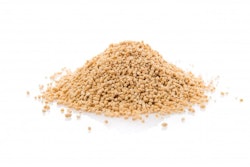
US/China to Sign Phase 1 Trade Agreement Today
The U.S.-China trade war is set to enter a new phase as President Trump and Chinese Vice Premier Liu He sign an initial trade deal.
The trade deal aims to increase Chinese purchases of U.S. manufactured products, agricultural goods, energy and services.
The Phase 1 agreement caps 18 months of tariffs and political acrimony between the world's two largest economies.
Part of the deal stipulates China to purchase an additional $200 billion worth of U.S. goods over two years to cut a bilateral U.S. trade deficit that peaked at $420 billion in 2018.
Agricultural purchases will get a $32 billion lift over the two years.
When combined with the $24 billion in 2017 farm exports, the $16 billion annual increase approaches Trump's goal of $40 billion to $50 billion in annual agricultural sales to China.
FBN’s Take On What It Means: At FBN, we believe that the Phase-1 trade agreement has the ability to represent a material move forward for the U.S. farmer. We look forward to seeing how the trade agreement details agricultural Chinese committed commodities, purchase volumes and time frames can impact supplies and prices.
Rains Help Support Argentina’s Corn and Soybean Crops
Recent rainfall has been helpful as the temperature outlook has grown more supportive of Argentine corn and soybean production.
Argentina’s soybean and corn crops are still in the earlier growth stages and soils ended 2019 on the driest note in several years.
Through the first third of January, rainfall in Argentina’s primary grain belt was running slightly below the monthly average.
The second half of December contained two of the five wettest days of the entire year for Argentina’s grain belt, and those were the wettest days observed in nearly eight months.
Soybean planting is 92% complete versus 95% a year earlier.
88% of the corn area has been planted identical to 2019.
Both crops were mostly rated in “good” condition.
The USDA reported Argentina corn and soybean production at 50 million and 53 million tonnes in the January WASDE on Friday.
FBN’s Take On What It Means: At FBN, we believe that improving weather for Argentina’s corn and soybean crops can be a negative for the U.S. farmer. Following an increase in Argentina’s agricultural export tariffs in December we have numerous questions about the size of Argentina’s corn and soybean exports in 2020 and how these can impact US exports.
The risk of trading futures, hedging, and speculating can be substantial. FBN BR LLC (NFA ID: 0508695)










